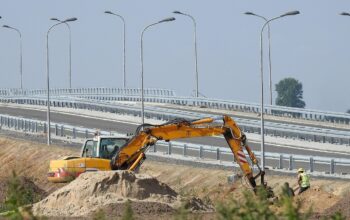Introduction to Climate Productivity
As the world grapples with the challenges of climate change, finding ways to balance sustainability with economic productivity has become a pressing issue. From agriculture to technology, various sectors are undergoing significant transformations to meet these dual goals. In this article, we’ll explore some of the most trending climate news related to productivity, highlighting real-world stories and practical solutions.
The push towards regenerative farming practices has been gaining momentum, with a focus on capturing carbon in soils. Techniques like planting cover crops and avoiding soil tillage can lead to carbon sequestration but may also reduce crop yields, posing challenges for food security. Researchers have pointed out that while these practices can mitigate climate change, they often come with regional tradeoffs, impacting productivity differently across various regions. For instance, a study by scientists at Cornell University highlighted that improving soil management doesn't always lead to win-win outcomes for both climate change mitigation and crop production. Instead, there are important regional tradeoffs, and the findings offer valuable insights for policymakers aiming to balance sustainability with increasing crop production needs. Technological advancements, particularly in artificial intelligence (AI), are expected to play a significant role in maintaining productivity growth in advanced economies. AI has the potential to counteract the decline in productivity by improving efficiency and innovation in various sectors. However, its impact on climate change mitigation is still evolving and needs further exploration. For example, AI can help in optimizing resource use and streamlining supply chains, potentially reducing waste and emissions. This dual role of technology in enhancing productivity while addressing environmental challenges is a crucial area of focus for policymakers and businesses alike. The transition to clean energy and the improvement of critical infrastructure are crucial for enhancing productivity while addressing climate change. This includes better battery storage and the integration of renewable energy sources into the grid. The ability of renewables to meet electricity demands efficiently is poised to transform the energy sector, making it more sustainable and resilient. Innovations in battery storage, for instance, are enabling the wider adoption of solar and wind power, which can stabilize energy supplies and reduce reliance on fossil fuels. This shift not only enhances energy productivity but also supports broader climate goals. Despite the potential of clean technologies, recent trends indicate a slowdown in investments. The cancellation of significant clean tech projects due to policy uncertainties has hindered progress toward low-carbon futures. This reversal in investment momentum highlights the need for consistent policy support to drive innovation and productivity in the clean energy sector. Policymakers face the challenge of creating a stable environment that encourages investment in clean technologies, which are crucial for both climate mitigation and economic growth. The lack of federal backing can create uncertainty, affecting the scale and credibility of state-level initiatives. Mining, traditionally seen as an extractive industry, is increasingly recognized for its role in sustainable development. The demand for minerals essential for clean energy technologies is growing rapidly, and mining can be a driver of economic opportunity in regions where other industries are scarce. However, ensuring that mining benefits communities while supporting sustainable development is a significant challenge. For example, Barrick Mining Corporation has emphasized the importance of sustainable mining practices that not only supply critical minerals but also uplift communities and drive long-term prosperity. This approach highlights the potential for mining to contribute positively to both climate mitigation and economic productivity. As the world continues to evolve in response to climate challenges, finding balance between sustainability and productivity remains a central theme. From agriculture to technology and mining, various sectors are innovating to meet these dual goals. The key lies in creating policies that support innovation, ensure regional adaptability, and foster collaboration across industries to drive both economic growth and environmental sustainability. By understanding these trends and challenges, businesses and policymakers can work together to create a future where productivity and climate goals are harmoniously aligned. References:Regenerative Farming and Climate Goals
Key Takeaways
The Role of Technology in Boosting Productivity
Key Takeaways
Infrastructure and Energy Transition
Key Takeaways
Challenges in Clean Tech Investments
Key Takeaways
Mining and Sustainable Development
Key Takeaways
Conclusion



